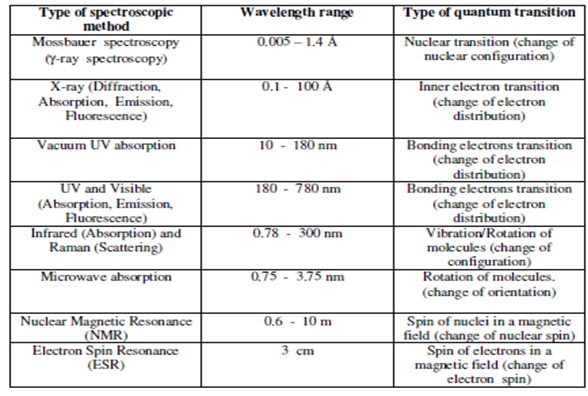Raman Scattering:
While a radiation interacts along with matter a part of it gets scattered. If a monochromatic radiation is used after that the scattered radiation is of the similar frequency as the incident frequency. This is known as Rayleigh scattering. Therefore, it has been found in which in certain cases the radiation might interact along with matter in such a way that it includes certain amount of energy exchange. Therefore the scattered radiation has frequencies greater or smaller than that of the incident radiation. This is known as Raman scattering and is an important analytical tool. You would learn in details about Raman spectroscopy, which is based on this type of scattering, of this course.
We have so far learnt that the radiation can interact in different ways with the matter and cause transitions amongst different types of quantised energy levels. Table summarizes different types of spectroscopies, the regions of the wavelength responsible for them and the nature of quantum transitions involved in them. We shall take up different spectroscopic methods in the forthcoming units.
Table: Spectroscopic methods based on wavelength range and the type of quantum transitions involved
